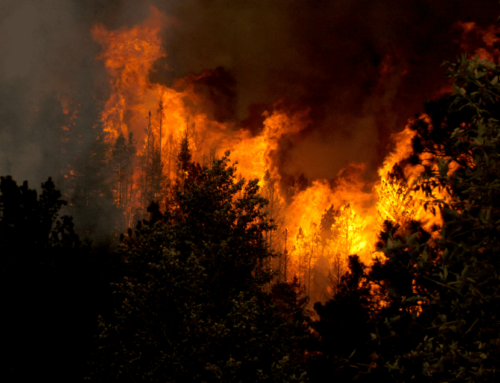On March 27, 2023, the Bureau of Land Management (BLM), an agency of the Department of the Interior, released the final “Waste Prevention, Production Subject to Royalties, and Resource Conservation” rule to address wasted natural gas from oil and gas development on federal lands. Methane is the largest component of unprocessed natural gas and is a potent greenhouse gas contributing to climate change.
Statement by Autumn Hanna, Vice President of Taxpayers for Common Sense
“Taxpayers for Common Sense applauds the Administration for taking an important step to rachet down costly methane waste. Today’s announcement by the Bureau of Land Management addresses decades old policies that have allowed billions of dollars’ worth of natural gas to literally go up in smoke, never reaching consumers and costing taxpayers millions of dollars in lost revenue year after year. The oil and gas industry has experienced dramatic technological advancements since the 1970s, but our methane policies have lagged far behind. Routine venting and flaring of natural gas from federal lands squanders valuable energy resources owned by American taxpayers, and this new rule will help curb this wasteful practice.”
Background
Every year, oil and gas companies waste billions of cubic feet of natural gas extracted from federal lands through the practice of venting (releasing) and flaring (burning off). Venting and flaring are a blatant waste of a valuable resource owned by American taxpayers and a threat to near- and long-term energy security. Furthermore, methane, the largest component of unprocessed natural gas, is a potent greenhouse gas and contributes to the rising costs of climate change.
In the ten-year period from FY2012 to FY2021, oil and gas operators reported venting, flaring, or losing 300 billion cubic feet (bcf) of natural gas from leases on federal lands, which had an estimated value of $949 million. Much of this gas was lost without incurring a royalty, costing taxpayers at least $76 million in potential royalty revenue over the past decade.
Additional Resources
- Onshore Oil and Natural Gas Operations on Federal and Tribal Lands in the United States: Joint Report by Taxpayers for Common Sense and Environmental Defense Fund quantifying natural gas waster on U.S. public and tribal lands.
- Gas Giveaways II: Methane Waste on Federal Lands is Business as Usual: TCS report on the billions of cubic feet of methane that is vented (released), flared (burnt off), and leaked by oil and gas operators on federal lands every year.
- Budget Watchdog, All Federal — Ep. 29: Venting & Flaring: TCS podcast on how methane waste from oil and gas development on federal lands is causing economic damage to all taxpayers – and the climate.
- Comments on Bureau of Land Management Proposed Methane Rule: TCS comments on the proposed “Waste Prevention, Production Subject to Royalties, and Resource Conservation” rule.
- TCS Statement on Release of Proposed Bureau of Land Management Methane Waste Rule: TCS statement applauding the agency for taking an important step to address methane waste from oil and gas developments on federal lands.
- Letter to the Department of the Interior on Methane Waste Prevention Rule: TCS urges the agency to publish a new proposed rule to curtail the waste of taxpayer-owned natural gas from oil and gas leases on federal lands through a prohibition of routine venting and flaring of associated gas and establishment of a clear standard for imposing royalties on lost gas.
- Methane Waste on Federal Lands: TCS issue brief on current policies that allow producers to vent, flare, and leak large amounts of methane without paying a royalty to federal taxpayers, the owner of the resource.











Get Social